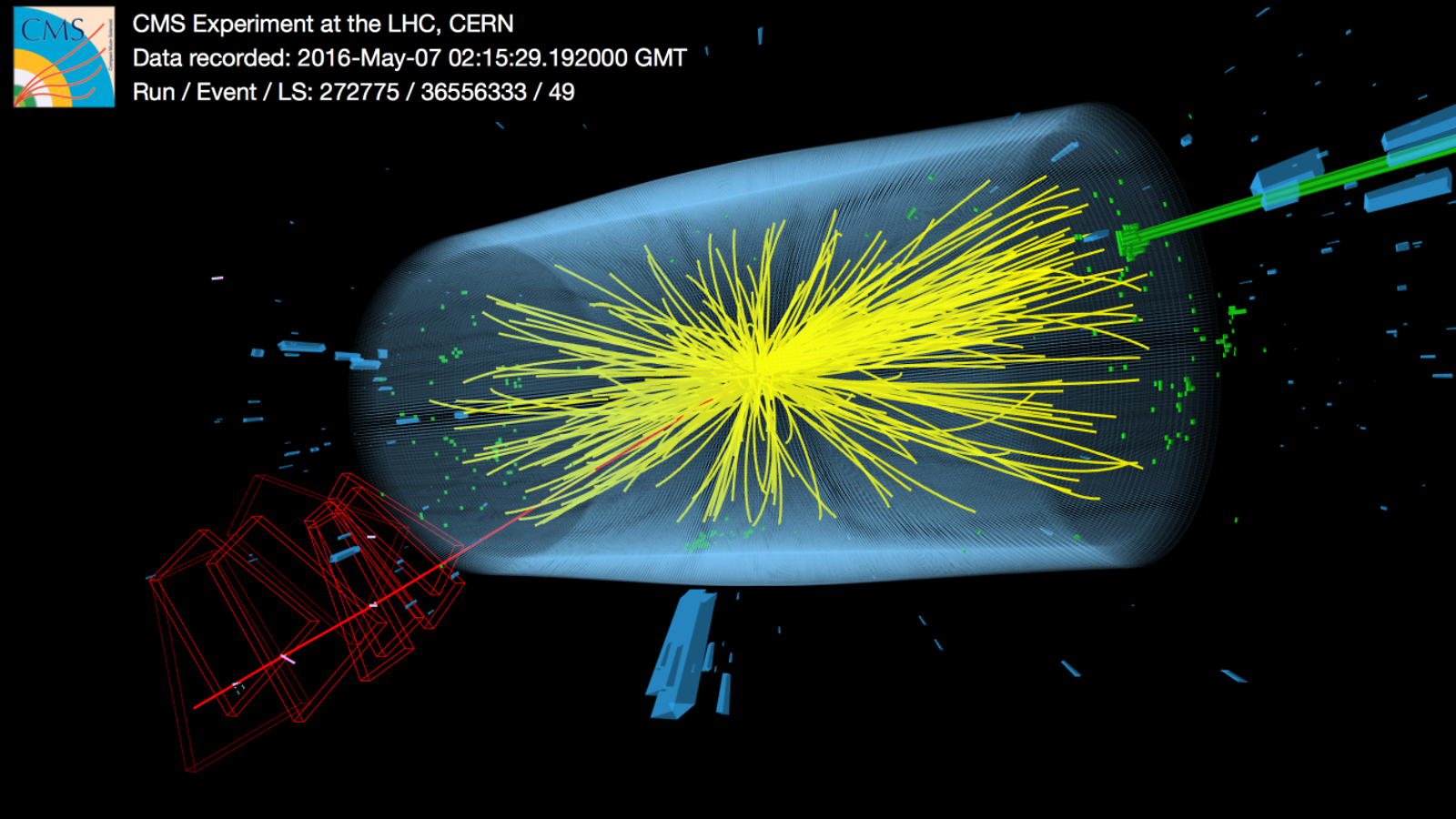After months of winter hibernation, the Large Hadron Collider is once again smashing protons and taking data. The LHC will run around the clock for the next six months and produce roughly 2 quadrillion high-quality proton collisions, six times more than in 2015 and just shy of the total number of collisions recorded during the nearly three years of the collider’s first run.
“2015 was a recommissioning year. 2016 will be a year of full data production during which we will focus on delivering the maximum number of data to the experiments,” says Fabiola Gianotti, CERN director general.
The LHC is the world’s most powerful particle accelerator. Its collisions produce subatomic fireballs of energy, which morph into the fundamental building blocks of matter. The four particle detectors located on the LHC’s ring allow scientists to record and study the properties of these building blocks and look for new fundamental particles and forces.
“We’re proud to support more than a thousand US scientists and engineers who play integral parts in operating the detectors, analyzing the data and developing tools and technologies to upgrade the LHC’s performance in this international endeavor,” says Jim Siegrist, associate director of science for high-energy physics in the US Department of Energy’s Office of Science. “The LHC is the only place in the world where this kind of research can be performed, and we are a fully committed partner on the LHC experiments and the future development of the collider itself.”
Between 2010 and 2013 the LHC produced proton-proton collisions with 8 Tera-electronvolts of energy. In the spring of 2015, after a two-year shutdown, LHC operators ramped up the collision energy to 13 TeV. This increase in energy enables scientists to explore a new realm of physics that was previously inaccessible. Run II collisions also produce Higgs bosons—the groundbreaking particle discovered in LHC Run I—25 percent faster than Run I collisions and increase the chances of finding new massive particles by more than 40 percent.
Almost everything we know about matter is summed up in the Standard Model of particle physics, an elegant map of the subatomic world. During the first run of the LHC, scientists on the ATLAS and CMS experiments discovered the Higgs boson, the cornerstone of the Standard Model that helps explain the origins of mass. The LHCb experiment also discovered never-before-seen five-quark particles, and the ALICE experiment studied the near-perfect liquid that existed immediately after the Big Bang. All these observations are in line with the predictions of the Standard Model.
“So far the Standard Model seems to explain matter, but we know there has to be something beyond the Standard Model,” says Denise Caldwell, director of the Physics Division of the National Science Foundation. “This potential new physics can only be uncovered with more data that will come with the next LHC run.”
For example, the Standard Model contains no explanation of gravity, one of the four fundamental forces in the universe. It also does not explain astronomical observations of dark matter, a type of matter that interacts with our visible universe only through gravity, nor does it explain why matter prevailed over antimatter during the formation of the early universe. The small mass of the Higgs boson also suggests that matter is fundamentally unstable.
The new LHC data will help scientists verify the Standard Model’s predictions and push beyond its boundaries. Many predicted and theoretical subatomic processes are so rare that scientists need billions of collisions to find just a small handful of events that are clean and scientifically interesting. Scientists also need an enormous amount of data to precisely measure well-known Standard Model processes. Any significant deviations from the Standard Model’s predictions could be the first step towards new physics.
The United States is the largest national contributor to both the ATLAS and CMS experiments, with 45 US universities and laboratories working on ATLAS and 49 working on CMS.
A version of this article was published by Fermilab.



